
views
Purchasing the Right Products for Your Hair
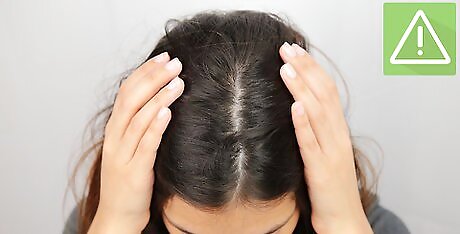
Pay attention to your scalp. Identify the kind of scalp you have. The type of scalp you possess affects the types of shampoo and conditioner products you should be purchasing for healthy short hair. Look closely at the bottle before you buy. Whether the product is hydrating, clarifying, or moisturizing, its main properties should be listed right on the bottle for you. If you have an oily scalp, look for a clarifying shampoo to clean your scalp and get rid of oil. Stay away from products that offer moisturizing or hydrating products. If you have a dry scalp, look for moisturizing or hydrating shampoos. Choose products that offer balancing or volume increasing effects, such as those featuring fewer to no sulfates. Those with normal scalps should change up the type of products they use as the condition of their scalp changes throughout the year.
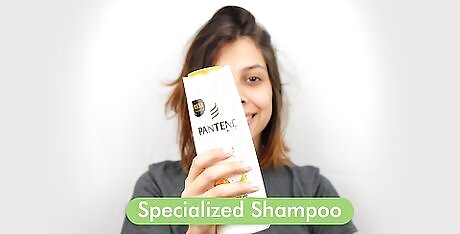
Choose a healthy product for your hair type. Is your hair thin, wavy, or curly and coarse? Much like your scalp, the type of hair you have will affect the shampoos and conditioners that will best keep your hair healthy. Thin hair benefits from products that add volume. Look for products with protein, silk protein, panthenol, and witch hazel. If your hair is actively thinning, try using a hair system kit like Nioxin. Medium or wavy hair benefits from most types of shampoo, depending on how you want your hair to look. Strong, general choices for medium hair includes products that smooth and detangle hair. Thick, curly, kinky or coarse hair benefits from hydrating and moisturizing products. You may even consider washing your hair with conditioner only, rather than using a drying shampoo. If you are not sure whether you hair needs moisture, protein or anything else, talk with your hair stylist. They can best assess the needs of your hair.
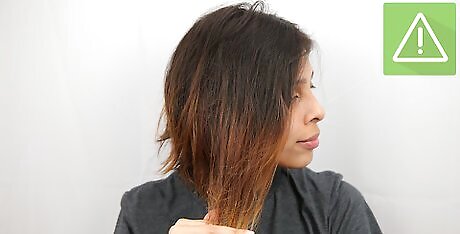
Consider whether your hair is color-treated. Hair that is color-treated can be damaged or dulled by shampoo that is not specifically made for such hair. Shampoos specialized for color-treated hair help fill in the lipid layer that is lost when coloring, keeping your color from fading as easily. Shampoo for color-treated hair tends to feature ingredients that make it very moisturizing. Keep this in mind if you have an oily scalp, and pair it up with a conditioner that counter balances the moisture.
Washing Your Short Hair
Rinse your hair with warm water before shampooing. Warm water opens up your hair’s cuticle, which allows it to absorb more nutrients and moisture. Wet your hair completely before beginning to shampoo.
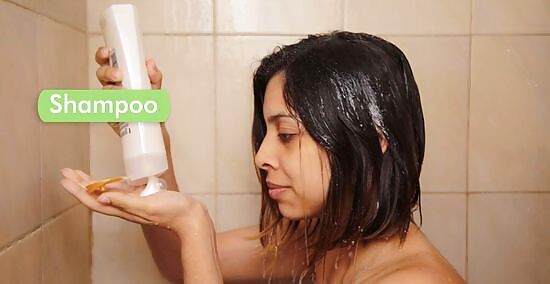
Apply shampoo to your scalp. Squeeze a small amount of shampoo into your palm – the size of a walnut should do, but you may opt for a little more if you have longer hair. Rub the shampoo into your scalp with gentle circular motions for about 30 seconds. Covering the hair with shampoo directly is not necessary with shorter hair. Lather the shampoo with a little water before applying to your scalp to avoid applying the pure shampoo to the scalp itself.
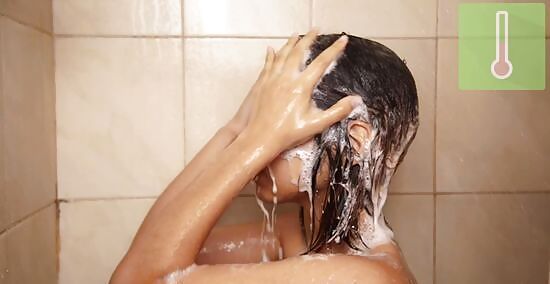
Rinse the shampoo from your hair. Use warm water to rinse the shampoo out of your hair. Once all of the shampoo is out of your hair, squeeze out the excess water. This shouldn’t be terribly difficult with short hair, provided you have enough hair to grab! Leaving too much water in your hair prior to conditioning prevents your hair from properly soaking up the conditioner's ingredients.
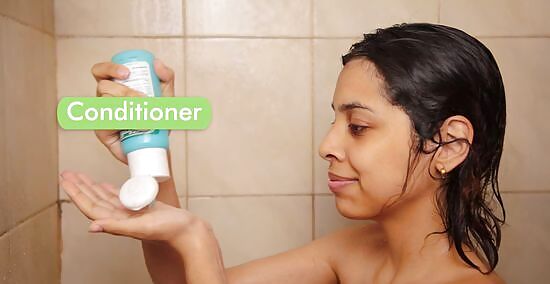
Condition your hair. Apply your conditioner starting at the ends of your hair and working your way toward the scalp. Apply it evenly throughout your hair, and allow the conditioner to sit in your hair for 1 to 2 minutes. If your hair is too short to effectively apply conditioner with your fingers, use a wide tooth comb to help apply the conditioner. Take those few minutes to take care of something else in the shower, like scrubbing your body or shaving.

Rinse the conditioner from your hair with cool water. Turn your water to a cool or tepid temperature to rinse out your shampoo. This helps to seal your hair’s cuticle. Make sure to remove all of the conditioner from your hair before exiting the shower. Leaving conditioner in your hair can clog hair follicles and create buildup in the scalp. You may have to spend a few more minutes rinsing the conditioner from your hair if you have thicker or wavy hair. Leave-in conditioner is an option for thicker or curly hair that does not have to be rinsed out following a shower.
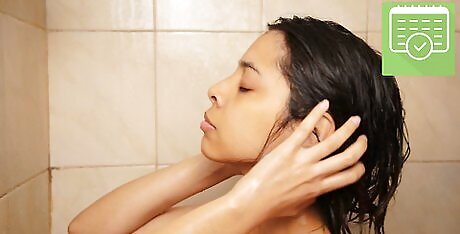
Repeat several times a week. How often you should wash your hair depends on the type of hair you have. Review the type of hair you have and how you feel about your hair given your current washing practices to adjust your habits appropriately. Fine hair typically only needs to be shampooed 3 times a week. Shampooing too much or too little can restrict the hair’s natural “bounce.” Thick hair shouldn’t be washed more than every other day to help maintain its volume. Coarse, curly hair doesn’t get as oily as quickly as other hair types, and can go longer without needing a wash. Shampooing twice a week will help you keep those curls. Most people don’t need to wash their hair every day. Daily washing essentially gives a signal to your scalp to produce more oil. On the days you’re not washing, you may use a dry shampoo.
Drying Short Hair With a Blow Dryer
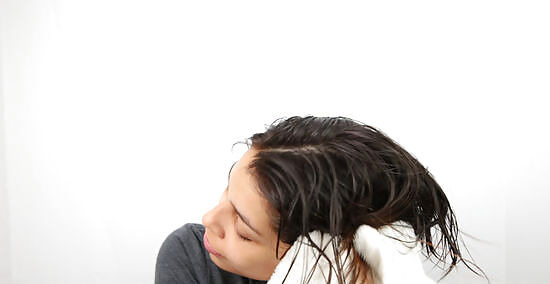
Prep hair by drying it with a towel. Pat your hair dry with a towel. This shouldn’t take long with short hair. You don’t want to scrub your hair, or you may damage your hair and create cowlicks. Squeeze out the moisture with careful blotting! Squeeze the excess moisture out of your hair with your hands prior to toweling. Fold the towel as it becomes moist so that you can apply dry portions to your hair.

Spray your hair with a styling spray. The proper spray will protect your hair from being damaged by heat, and allow your hair to keep shape after being dried. These come in a variety of styles, including some that further moisturize, so pick a type that suits your hair. Follow the same rules for choosing a styling spray as you do for choosing a shampoo and conditioner. The spray should be based on the type of hair you have, and the dryness level of your scalp.

Blow dry and brush your hair. Use a flat brush to pull your hair in every direction. The object is to create a voluminous “lift,” without your hair becoming “poofy.” Allow straight and wavy hair to air-dry for several minutes after toweling before turning on the blow drier. Curly hair can begin just after air drying. Separate your hair into sections with clips to make drying faster and more effective. This can give your hair a more polished look as well. Dry 3- to 4-inch sections of hair at a time to help shape your hair. Use a mixed-bristle brush to help dry the roots as well. Keep the blow dryer pointed toward the floor to help prevent hair frizz.
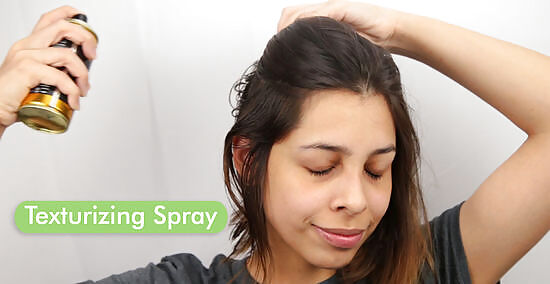
Apply a texturizing hairspray and style your hair. Use the texturizing spray to tease your hair how you like. This helps avoid a “helmet head” look. Choose a hairspray strength according to your hair type. Straight hair typically only needs a spray that is low-hold. Hair this is thicker or made into an "up-do" will require medium to strong-hold. If your hair starts to lose its hold during the day, reset the hold by spraying a little water into your hair. Feel free to use your hands to tease your hair for a natural look, or use a comb if you want a sleeker look.



















Comments
0 comment